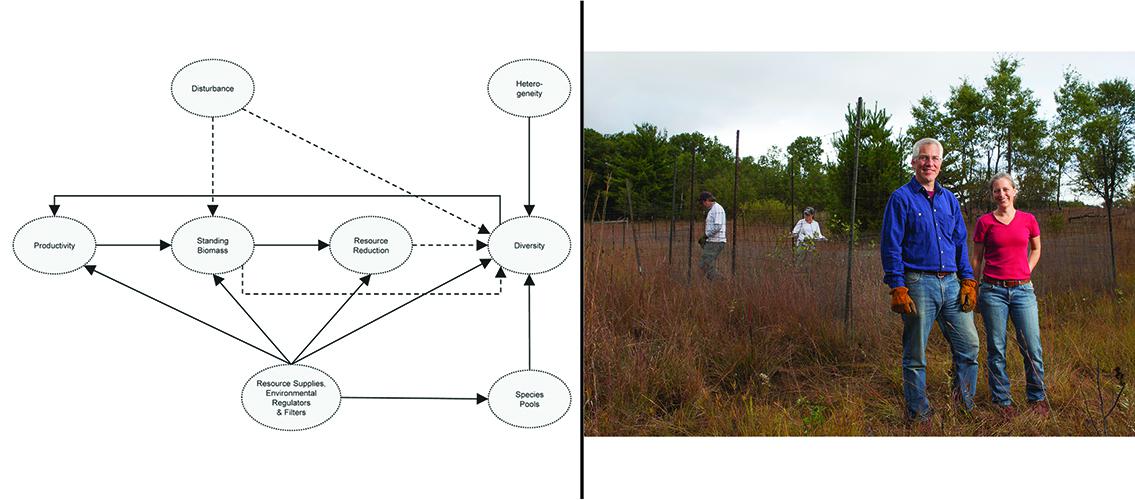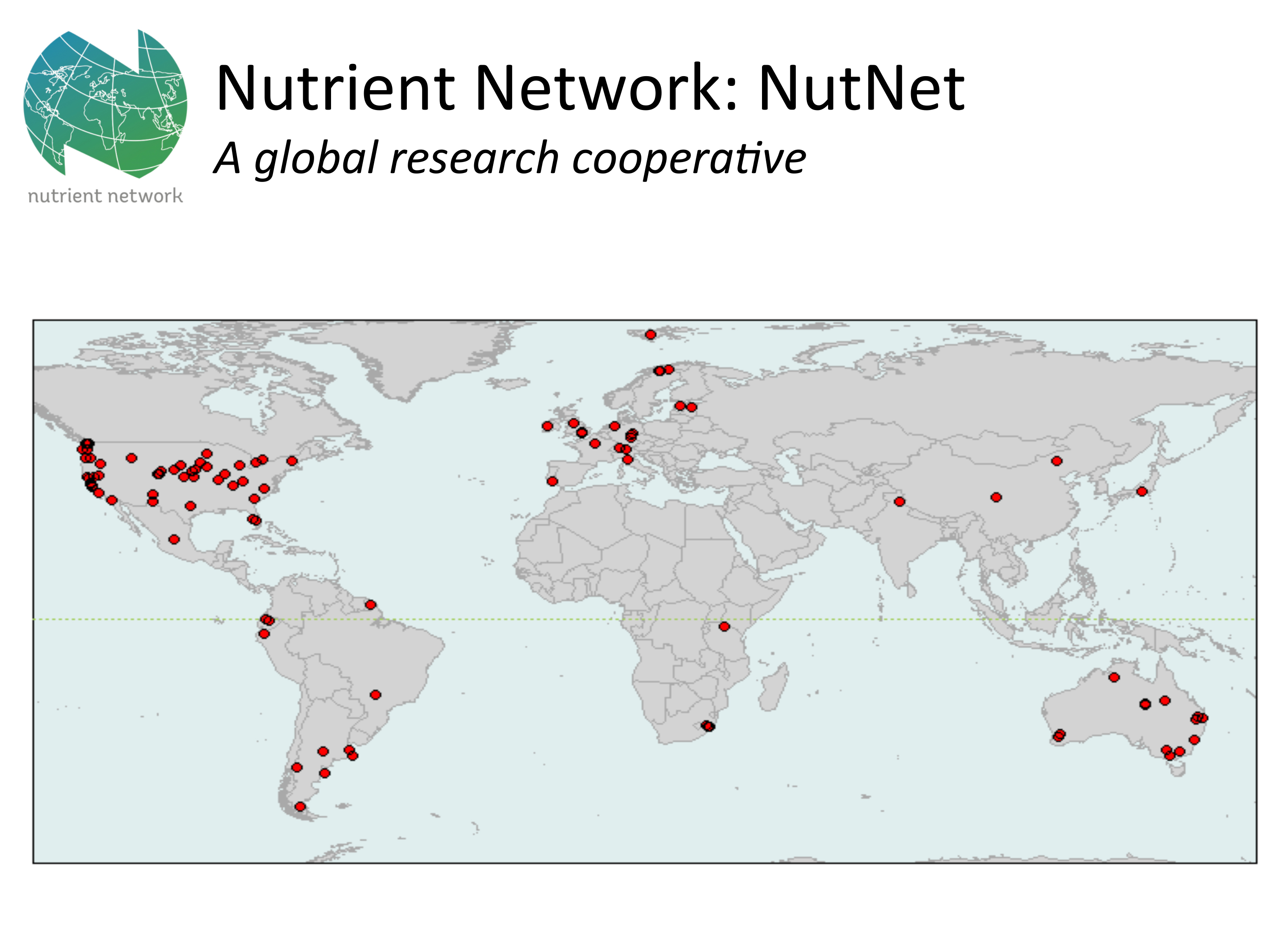
The relationship between vegetation productivity and species richness has been under investigation by ecologists for many years. However, scientists have not been able to develop a definitive method to determine this relationship using bivariate analysis. One reason for this may be that both productivity and richness are controlled by a wide variety of influences. MSI PI Eric Seabloom (Ecology, Evolution, and Behavior) and colleagues at the University of Minnesota and elsewhere have developed an integrative computer model that incorporates a number of theoretical constructs and interconnections. The model was tested using data from the Nutrient Network (NutNet), an international research cooperative that gathers data from about 100 grassland sites across the globe. The results showed how factors such as biomass, macroclimate, and soil characteristics independently affect both richness and productivity. The research was published in the prestigious journal Nature early in 2016: JB Grace, TM Anderson, EW Seabloom, ET Borer, PB Adler, WS Harpole, Y Hautier, H Hillebrand, EM Lind, JD Bakker, et al. 2016. Integrative modelling reveals mechanisms linking productivity and plant species richness. Nature 529, 390-393, DOI: 10.1038/nature16524. In a subsequent paper in Nature, the researchers used experimental data from these NutNet sites to demonstrate that continued eutrophication of global grasslands ecosystems will lead to local extinctions of plants species (WS Harpole, L Sullivan, E Lind, J Firn, P Adler, E Borer, J Chase, P Fay, Y Hautier, H Hillebrand, AS MacDougall, EW Seabloom, et al. 2016. Addition of multiple limiting resources reduces grassland diversity. Nature. 537, 93-96, DOI: 10.1038/nature19324). This is particularly alarming, given that human activities had dramatically increased the amount and types of nutrients entering the earth’s ecosystems.
Site map of NutNet collaborative:
Associate Professor Seabloom and his colleagues Associate Professor Elizabeth Borer and Dr. Eric Lind (also co-authors on these papers) coordinate the NutNet collaboration. The NutNet project enables collaborative research that will advance knowledge about how ecosystems respond to global ecological changes. Associate Professor Seabloom and his NutNet colleagues use MSI resources to host the main MySQL NutNet database and conduct analyses using R and other analytical software. They have many publications using NutNet data and were previously featured on the MSI website in April 2014.
Top image description:
Left: Structural equation meta-model showing hypothesized probabilistic expectations based on literature related to the productivity-diversity debate. Solid lines represent expected positive effects, dashed lines represent expected negative effects. Specific implementations of this generalized model for particular cases will probably differ in detail as appropriate for the situation and available data. Image and description from JB Grace et al., Nature 529:390, DOI:10.1038/nature16524 (2016).
Right: Associate Professors Eric Seabloom and Elizabeth Borer at the NutNet enclosures at the University of Minnesota Cedar Creek Ecosystem Science Reserve. Dr. Eric Lind is one of the researchers in the background. Photo courtesy Associate Professor Eric Seabloom.
posted on November 2, 2016
